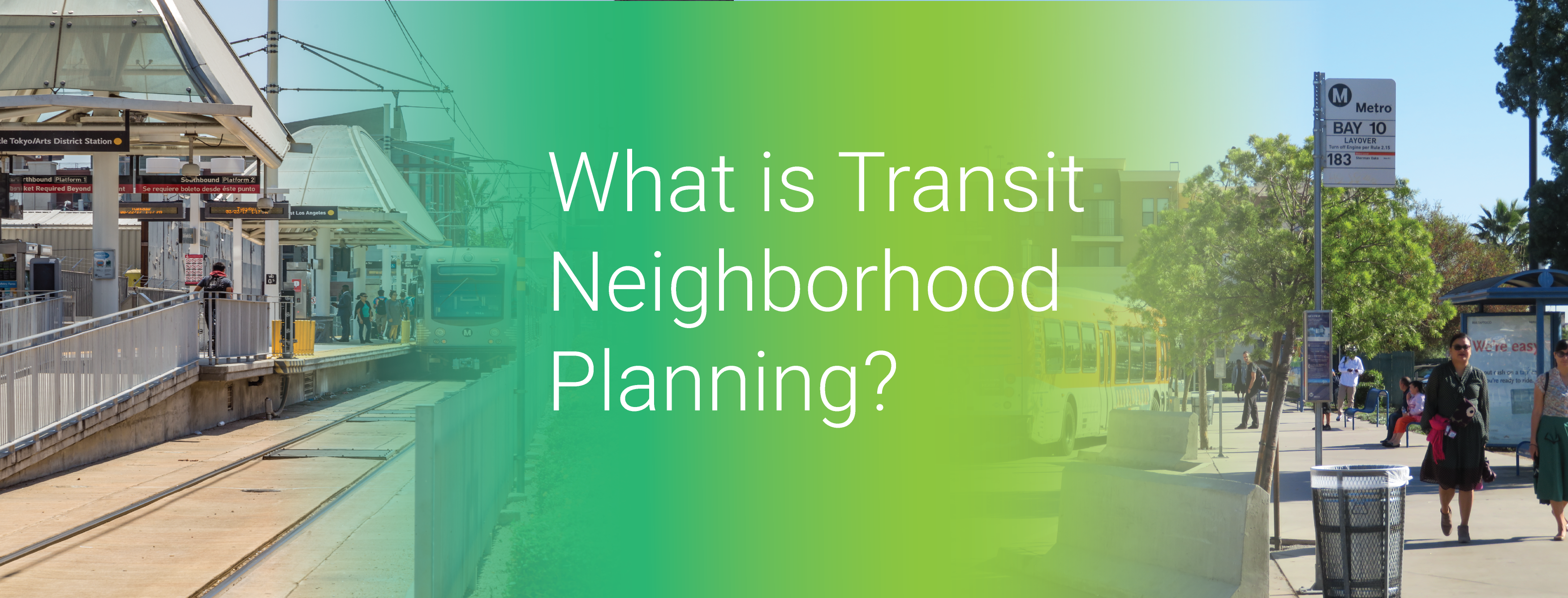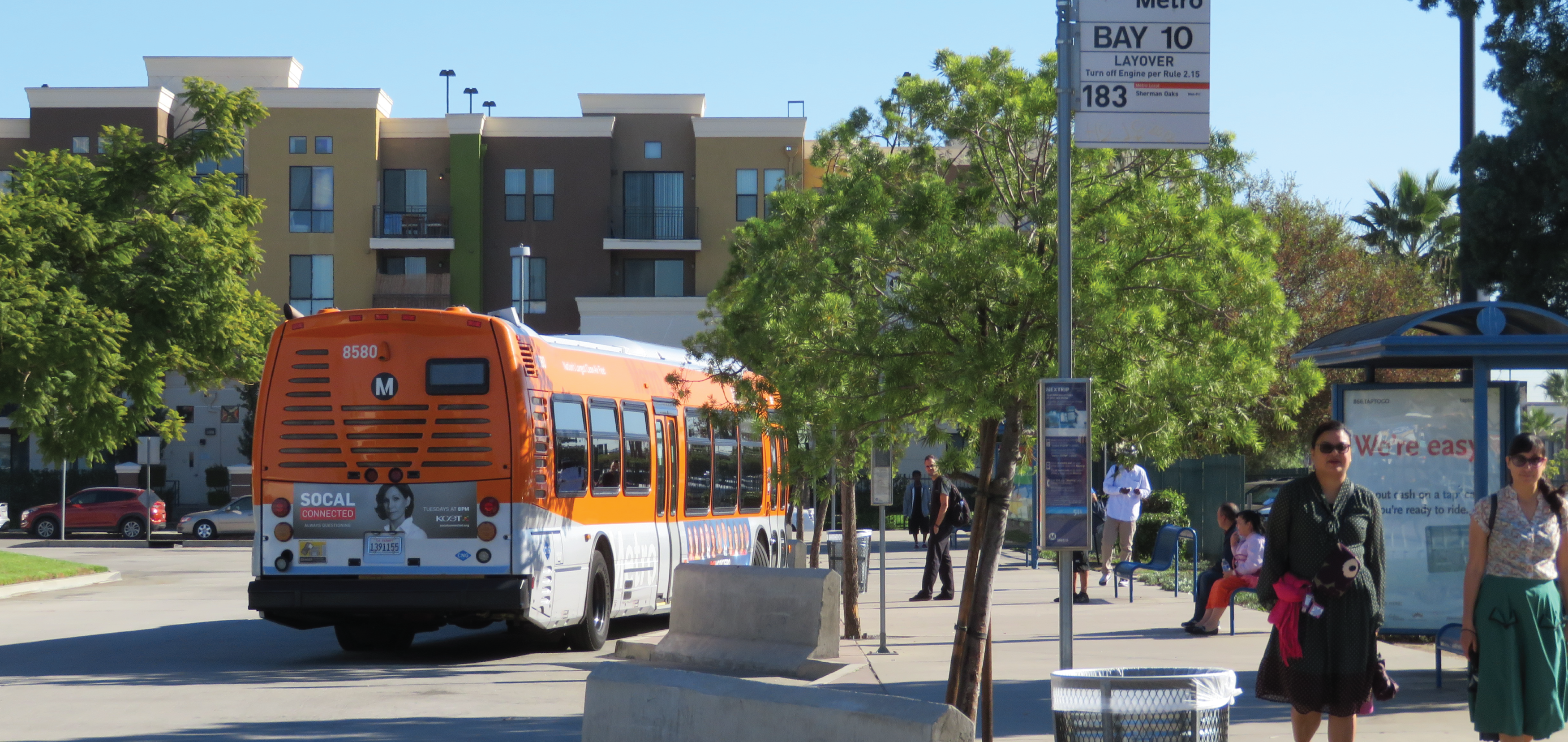
-
Category:
- Communities
Focusing future development projects near public transportation hubs in large cities like Los Angeles has the potential to vastly increase transit ridership, which, in turn, reduces greenhouse gas emissions and traffic congestion. Less cars on the road then minimizes commute times that can result in healthier, friendlier, and more livable cities for everyone by creating more opportunities for safe pedestrian activity.
Plans for transit-oriented neighborhoods in Los Angeles typically embrace building designs that include a variety of functions and purposes that enable access to public transit by making it easier and more convenient to use. Known as Transit Oriented Communities, this style of development is intended to expand mobility options for greater numbers of people; improve the livability of the City; reinforce neighborhood character and identity; and generate greater economic opportunity for all residents.

In partnership with Metro, City Planning launched the Transit Neighborhood Plans (TNP) program in 2012 to encourage the growth of livable communities and employment centers around the region’s expanding transit network. The TNP program supports the Department’’s efforts to enhance access to transit, promote housing options for all income levels, reduce greenhouse gas emissions, and promote sustainable development, as it reinforces the goals of the General Plan Framework Element and all 35 individual Community Plans by promoting high-quality building design and a mix of uses within a half-mile radius of transit stops.
By increasing development intensity around transit stations and corridors, the City can better incorporate travel modes like walking, rail, bike, bus, and other micro mobility options. The wide array of travel choices can reduce the City’s dependence on cars as well as reduce the overall need to travel far distances for everyday needs.
When Measure M passed with 72 percent voter approval in 2016 as the most ambitious mass transit expansion project in Los Angeles County history, City Planning sharpened its focus on concentrating infill development around major corridors and transit stations, primarily within commercial, multifamily, and some industrial areas through the TNP program. TNPs currently in development around existing and future transit corridors include the Orange Line TNP, Slauson Corridor, the Regional Connector, and the Crenshaw/LAX Line. Comprehensive planning efforts are also underway with updates to the General Plan and Community Plans, along with other work programs that are in progress along Los Angeles’s major transit lines.
The TNPs not only establish new regulations to support transit ridership through the advancement of tailored, pedestrian-oriented building design standards and other streetscape improvements, but in the case of the Exposition Corridor TNP, it has also increased housing capacity within its boundaries by 4,400 to 6,000 units. While zoning in most of the low-density single-family neighborhoods remained the same in the Exposition Corridor TNP area, the adopted plan increased the zoning in two single-family areas. These areas, previously zoned for single-family use, were upgraded to allow for medium-density, multi-family, and mixed-use zoning.
The areas designated for commercial use under the adopted plan were additionally expanded to accommodate as many as 14,300 new jobs—generating greater economic opportunities on the Westside, which is home to emerging industrial sectors and clusters of creative, clean industry -- including high-tech jobs. These targeted zone changes are helping to create opportunities for new housing, while also fostering new commercial connections in proximity to high-quality transportation.
Planners for this and other TNPs have been working with stakeholders to shape the design and development that best meets the needs of neighborhood residents and community members. The public comments gathered during these processes all get reflected in the various plans’ key provisions, including in their design standards, building intensities, and public benefits systems.
To learn more about planning transit oriented developments in your community, please visit planning.lacity.gov/plans-policies/initiatives-policies/transit-neighborhood-plans.